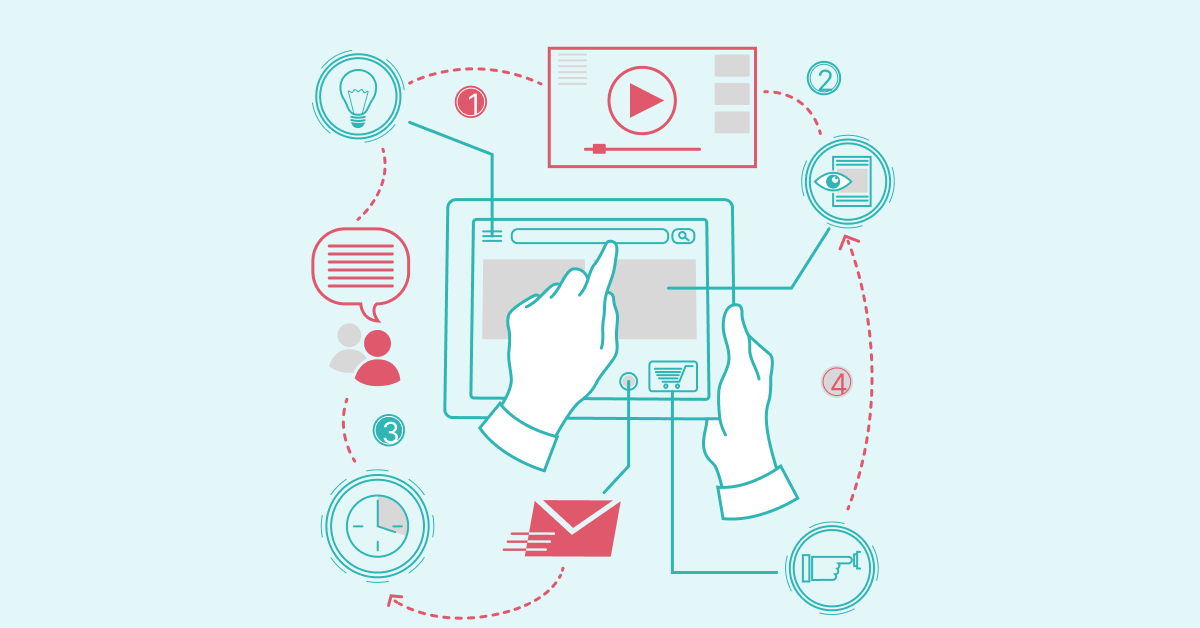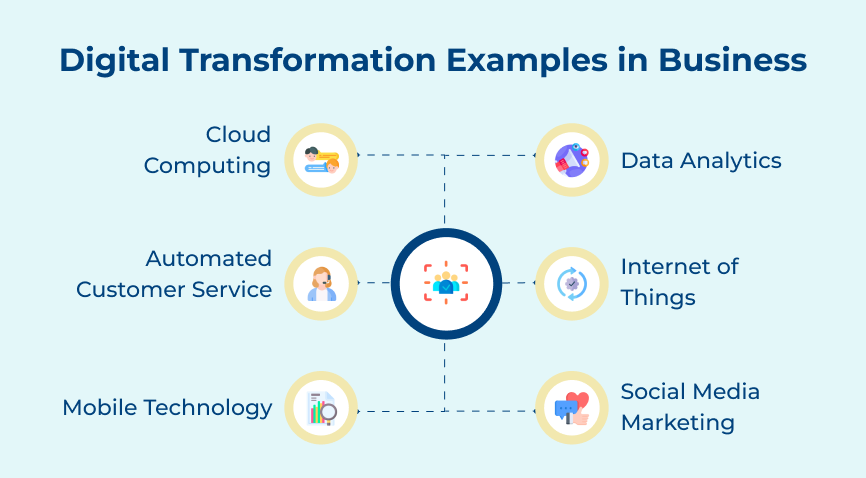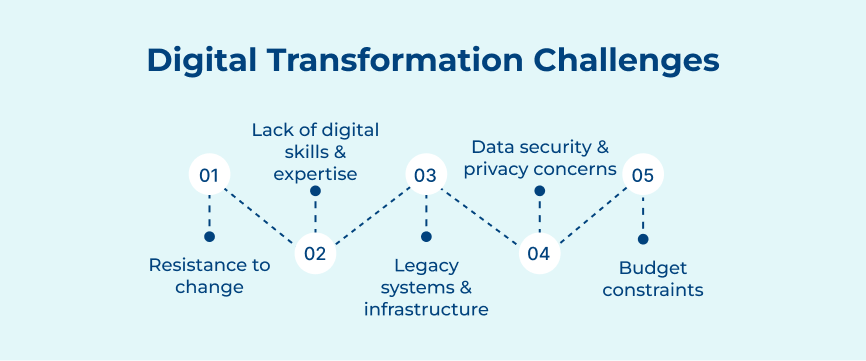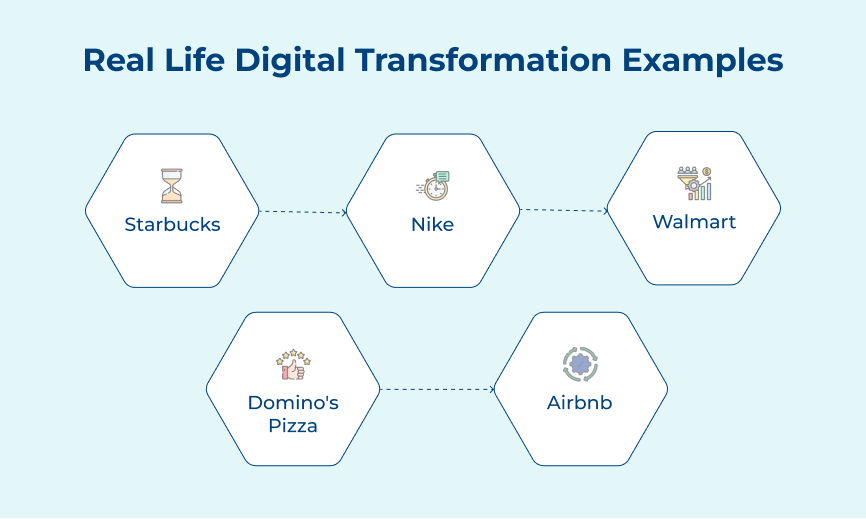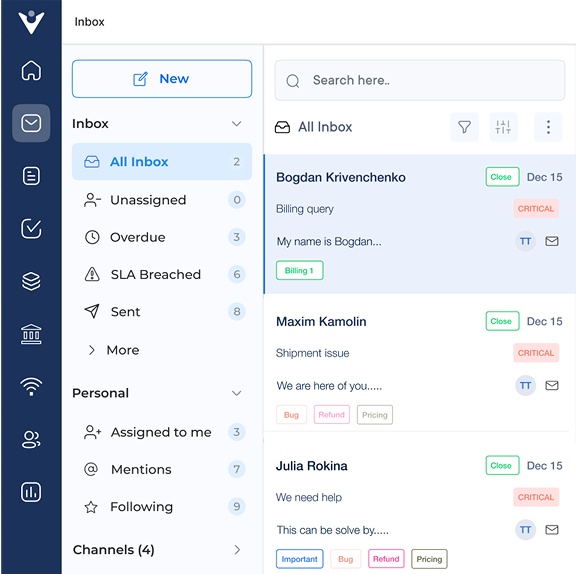1. Cloud Computing
Cloud computing is one of the prime digital transformation examples. The technology allows organizations to store data and applications over the internet, rather than on local servers or personal computers. One way cloud computing contributes to digital transformation is by enabling businesses to scale operations and access resources on demand.
A common use case of cloud computing in digital transformation is the migration of traditional on-premise systems to cloud-based solutions. The shift not only reduces costs associated with hardware maintenance but also increases efficiency and collaboration among employees.
How to achieve:
- Embrace a cloud-native approach by designing applications specifically for cloud environments to fully leverage its capabilities.
- Implement robust security measures to protect data and ensure compliance with regulations.
- Continuously monitor or optimize cloud resources to maximize performance and cost-efficiency.
2. Data Analytics
Data Analytics is one of the main digital transformation examples. Utilizing advanced technologies and algorithms to analyze vast amounts of data allows companies to gain valuable insights. It helps make informed decisions to improve their operations and boost their bottom line.
Let’s take the example of a retail company that can use data analytics to analyze customer buying patterns and preferences. Allowing them to tailor marketing campaigns and product offerings to better meet their customers’ needs. The targeted approach can lead to increased sales and customer satisfaction.
Pro tips:
- Invest in the right tools and technologies: Choose data analytics platforms and tools that align with the company’s objectives.
- Hire skilled data analysts: Having a team of skilled data analysts who can interpret and analyze data effectively is crucial for successful implementation.
- Continuously track and measure results: Regularly monitor key performance indicators and adjust strategies based on data-driven insights to ensure ongoing success with data analytics.
3. Automated Customer Service
Implementing automated customer service is one of the prime digital transformation examples. The innovative approach utilizes artificial intelligence or chatbots to streamline customer service processes, enhance efficiency and provide 24/7 support. 79% of customer service professionals say AI and automation tools are important to their overall strategy.
A use case of this example in action could involve a retail company using chatbots to handle customer inquiries, process orders and provide personalized products. It not only saves time or resources for the business but also gives customers a seamless and convenient experience when interacting with the brand.
Best practices:
- Regularly updating or optimizing chatbot algorithms to provide accurate and relevant information to customers.
- Integrating chatbots with other customer service channels to ensure a cohesive and consistent experience for customers.
- Monitoring or analyzing data from automated interactions to identify trends, improve performance and make informed decisions for future enhancements.
4. Internet of Things (IoT)
The Internet of Things (IoT) is one of the prime digital transformation examples in action. IoT refers to the network of physical objects embedded with sensors, software and connectivity that enables these objects to collect or exchange data. Its interconnected system allows for real-time communication between devices and systems.
One way IoT helps in digitally transforming a company is by providing valuable data insights that can be used to optimize operations and make informed decisions. Let’s take an example of a manufacturing company that can use IoT sensors. It helps monitor equipment performance in real time, predict maintenance needs and prevent costly downtime.
Best practices:
- Ensure data security and privacy: The vast amount of data collected by IoT devices makes it crucial to have robust security measures in place to protect sensitive information.
- Integrate IoT with existing systems: Companies should integrate IoT data with their existing systems and processes. It streamlines operations or improves overall efficiency to fully leverage the benefits of IoT.
- Stay updated on IoT advancements: The field of IoT is constantly evolving. Companies need to stay informed about the latest trends and technologies to remain competitive in the digital landscape.
5. Mobile Technology
Mobile technology is one of the main digital transformation examples, revolutionizing the way businesses operate and interact with customers. The rise of smartphones or mobile apps allows businesses to reach customers anytime, anywhere and provide seamless experiences. One key aspect of mobile technology as a part of digital transformation is the shift towards mobile-first strategies.
A use case demonstrating how mobile technology has transformed businesses is the rise of e-commerce apps. Mobile shopping becoming increasingly popular allowing businesses to reach a global audience and provide personalized shopping experiences through their mobile apps.
How to achieve:
- Optimize the mobile app for speed and usability to enhance the user experience.
- Implement mobile payment options to streamline the purchasing process for customers.
- Use push notifications or personalized messages to engage with customers and drive sales.
6. Social Media Marketing
Social media marketing is one of the prime digital transformation examples. Social media platforms have revolutionized how businesses connect with their target audience, showcase their products or services and drive sales.
